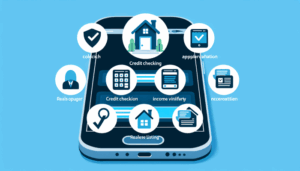
Often, the key to financial success is not just about hard work or discipline in controlling spending.
The real difference lies in the way how we perceive and react to the world of money.
Cultivating a positive financial mindset helps you deal with stress, overcome obstacles and achieve goals more clearly.
In this complete guide, you will learn practical and proven strategies to transform your financial mindsetto improve your relationship with money and achieve long-term stability.
Before making any changes, it's essential to understand your relationship with money.
Often, our financial beliefs are shaped by childhood experiences, the way our family dealt with resources or past traumas.
For example:
People who have grown up in indebted households tend to see money as scarce.
Those who have been taught to save from an early age can develop greater financial security.
Experiences of losses or bad decisions in the past can lead to fear of investing.
To identify these patternsIn this way, you discover which beliefs drive you and which limit you. Ask yourself:
Does money make me anxious or calm?
Do I see money as a good thing or as a problem?
Do I have habits that sabotage my financial progress?
From these answers, it is easier to start a process of mental reprogramming in relation to finances.
After identifying your beliefs, the next step is to nurturing positive thoughts and behaviors about money.
That means:
Recognize that you deserve to prosper.
Believe that you can achieve stability.
Seeing opportunities instead of focusing only on difficulties.
Imagine two people with the same income. One of them thinks: "I'll never be able to save money, everything is so expensive".
The other believes: "If I organize my spending, I'll be able to save and invest". Which one is more likely to achieve results?
A positive mindset is a fuel that increases resilience in the face of financial challenges.
Have well-defined financial targets is like drawing up a map for your financial life. Without goals, it's easy to lose your way and spend money impulsively.
To increase your chances of success, use the SMART:
S: Be specific (e.g. raise R$ 20,000 to buy a car).
M: Set measurable goals (e.g. save R$ 1,666 per month).
A: Make sure they are reachable.
RGoals need to be relevant to your life objectives.
T: Set clear deadlines.
Also, divide big goals into small steps. This increases motivation and makes the process less stressful.
Transforming your mindset doesn't happen overnight. It's an ongoing process, but it's entirely possible when you adopt practical strategies.
A financial education is the basis of a positive mindset. The more knowledge you acquire, the more confident you feel about making strategic decisions.
Some ways to learn continuously:
Read personal finance books, such as Rich Dad, Poor Dad or The Richest Man in Babylon.
Take free online courses on finance.
Follow YouTube channels and specialized podcasts.
Attend workshops and lectures.
This constant learning creates a mentality of financial growthopening doors to new opportunities.
The budget is one of the most powerful tools for maintaining control. By listing all the money coming in and going out, you can:
Identify waste.
Prioritize what really matters.
Planning investments.
A very effective method is 50/30/20:
50% of income for necessities (housing, food, fixed bills).
30% for desires (leisure, travel, hobbies).
20% for savings and investments.
By reviewing your budget on a monthly basis, you ensure that your choices are in line with the goals you have set.
As well as thinking in the short term, it's important to plan medium- and long-term goals. Examples:
Create a emergency reserve equivalent to six months' expenses.
Pay off all credit card debts within 12 months.
Save resources for the retirement through long-term investments.
These goals create a sense of purpose, avoiding impulsive spending and directing energy towards what really matters.
The way you look at money directly influences your results. Scarcity thinking focuses on what's missing, while abundance thinking focuses on what's available. growth opportunities.
This doesn't mean ignoring reality, but believing that it is possible to improve. Those who think abundantly tend to look for new sources of income, invest more and take calculated risks.
Developing a positive financial mindset it's not just about having more money, but also about living with more peace of mind and purpose.
Our mentality shapes behaviors like:
The decision to spend or save.
The way to deal with debts.
The level of confidence to invest.
People with a negative financial mindset tend to feel trapped in cycles of debt. Those who cultivate positive thoughts, on the other hand, are able to see creative solutions to their challenges.
An assertive mindset brings benefits such as:
Conscious decision-makingyou think before you spend.
Emotional control: avoid impulse purchases.
Strategic planning: you organize your financial life according to your goals.
This kind of mentality increases your ability to invest, generate wealth and achieve financial freedom.
Reduces the stress caused by money.
Increases the feeling of security and stability.
It improves relationships, since most family arguments are linked to finances.
It generates long-term prosperity.
Today there are countless free and paid resources that can speed up your transformation:
Investopedia - Encyclopedia of financial concepts.
Blogs specializing in personal finance.
Podcasts about investments and financial productivity.
Lectures by experts in financial education.
Developing a positive financial mindset is a journey that requires reflection, discipline and constant learning.
By understanding your relationship with money, adopting positive attitudes, setting clear goals and investing in education, you create solid foundations for a balanced financial life.
Remember: nobody is born with a perfect mindset. But with focus, patience and the use of the right tools, you can transform your relationship with money and achieve lasting prosperity.
💡 Start applying today at least one of the strategies presented and see how small changes can generate big results in the future.
Khan Academy - Free finance courses.
You Need a Budget - Complete financial management application.
Mint - Financial planning and cost control